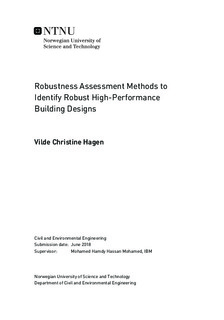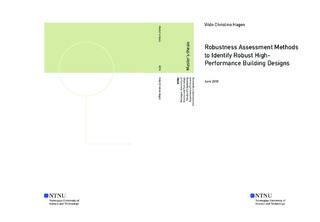| dc.description.abstract | Robustness assessment is a method that evaluates the robustness of building designs based on uncertainties in building operation and external conditions. Although environmentally friendly buildings are planned to have low energy consumption, the actual values are often higher due to these uncertainties. In the robustness assessment, different scenarios based on the uncertainties are created to test how robust the designs are. Three different robustness indicators (RI) are evaluated: performance spread, performance deviation and maximum performance regret.
In this master thesis, an apartment at Løren in Oslo is studied, and different designs of this apartment are evaluated in terms of robustness. The designs consist of two standards, TEK 17 and passive house, in combination with different shading types. Furthermore, the scenarios are based on combinations of occupant behavior (OB) and climate changes. The occupant behavior consists of how much opening of windows is used, while the climate changes are based on to climate files for Oslo: current climate and assumptions on how the climate will be in 2050.
Through a link between IDA ICE and Matlab, an algorithm in Matlab runs all the simulations for each model in parallel in IDA ICE. The models consist of different OBs, while the simulations vary in design and climate. The output values from the simulations, heating energy demand and overheating (measured in degree hours), are used as key performance indicators (KPI). Based on the KPIs, robustness indicators (RIs) are defined to assess the robustness of each design.
The results from the robustness assessment show that the robustness of the designs vary from which RI and KPI that are considered. The most robust design according to overheating across all RIs is TEK 17 with external blinds. Furthermore, the most robust design in terms of heating energy demand according to performance spread is TEK 17 without shading and internal blinds. On the other hand, according to the two other RIs, performance deviation and maximum performance regret, the most robust design is passive house with no shading. The results also show that which design that is the most beneficial for stakeholders varies with which RI that suits them best and what they emphasize highly in buildings. For example, thermal comfort, low energy consumption or investment costs. | |

